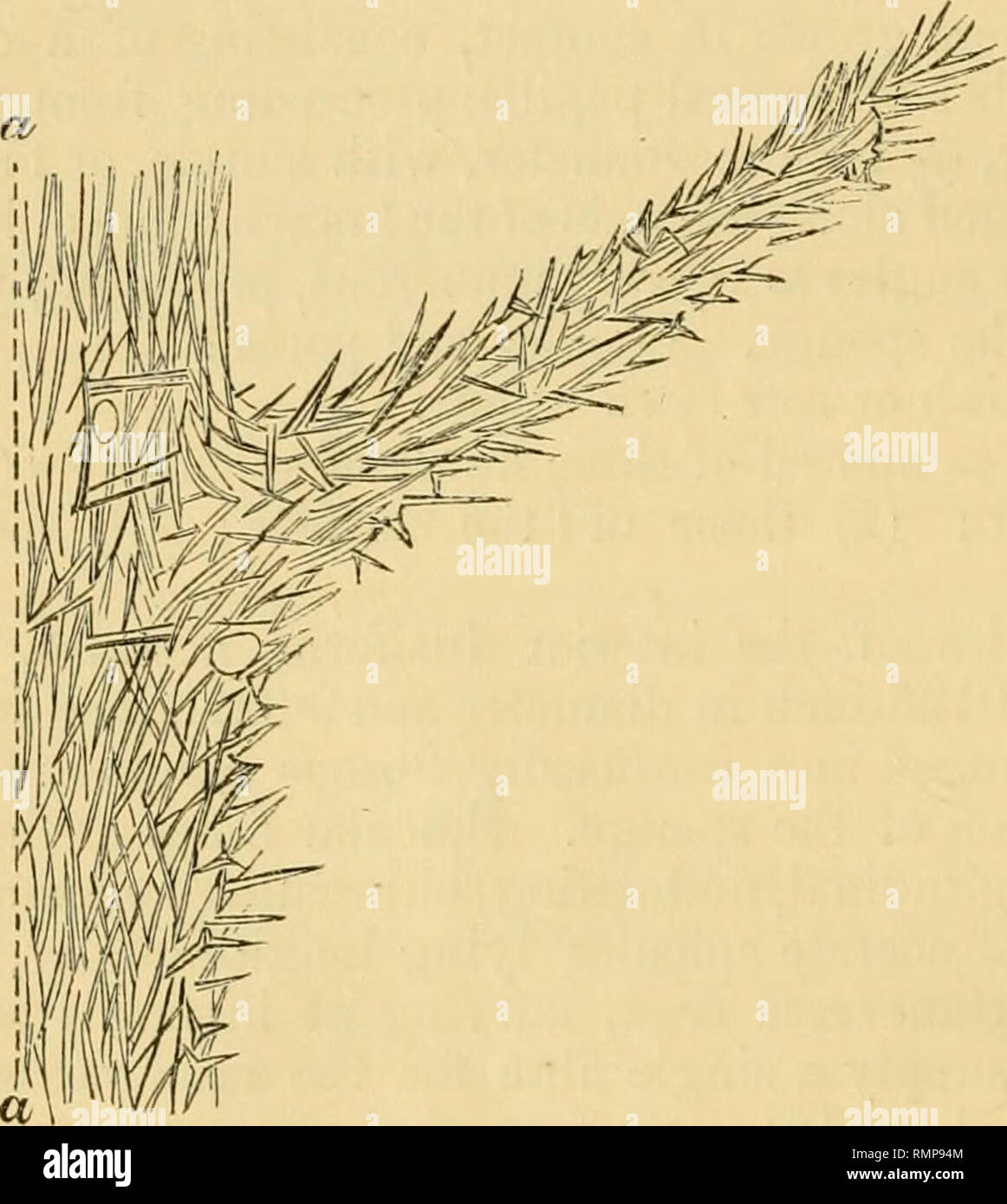. The Annals and magazine of natural history; zoology, botany, and geology. Natural history; Zoology; Botany; Geology. 18 Mr. W. J. Sollas on a new Genus and very numerous, frequently collected into longitudinal bundles (fig. 5). Hah. Marine. Loc. (?). Collection, Bristol Museum. Obs. Two of the most important characters of this sponge are, first, the triradiate form of its echinating spicules, and, next, the extreme tendency to variation which these display. That the normal echinating spicule is truly triradiate, just as, say, a characteristic Hexactinellid spicule is sexradiate, is proved by

Image details
Contributor:
Library Book Collection / Alamy Stock PhotoImage ID:
RMP94MFile size:
7.2 MB (243 KB Compressed download)Releases:
Model - no | Property - noDo I need a release?Dimensions:
1495 x 1672 px | 25.3 x 28.3 cm | 10 x 11.1 inches | 150dpiMore information:
This image is a public domain image, which means either that copyright has expired in the image or the copyright holder has waived their copyright. Alamy charges you a fee for access to the high resolution copy of the image.
This image could have imperfections as it’s either historical or reportage.
. The Annals and magazine of natural history; zoology, botany, and geology. Natural history; Zoology; Botany; Geology. 18 Mr. W. J. Sollas on a new Genus and very numerous, frequently collected into longitudinal bundles (fig. 5). Hah. Marine. Loc. (?). Collection, Bristol Museum. Obs. Two of the most important characters of this sponge are, first, the triradiate form of its echinating spicules, and, next, the extreme tendency to variation which these display. That the normal echinating spicule is truly triradiate, just as, say, a characteristic Hexactinellid spicule is sexradiate, is proved by the triradiate form of its axial canal. In spicules Fie. 1.. Diagrammatic section taken longitudinally through a papilla and one half of the stem of the sponge: a, a, axial line of the stem. which have not been subjected to any chemical treatment the canal, is only just discoverable ; but by boiling them for three or four minutes in caustic alkali it becomes enlarged and is then very obvious. The cavity from which the three arms of the canal originate is frequently globular in shape, and ex- ceeds the canals in diameter ; it represents the position of the young spicule-cell before it had budded to produce the adult form ; and it may very conveniently be used as a fixed point within the spicule from which to measure the length of its diverging rays. To produce the normal form of echinating spicule, two buds must have sprouted from the inner or proximal face of the spicule-cell, and by growing obliquely into the sponge have. Please note that these images are extracted from scanned page images that may have been digitally enhanced for readability - coloration and appearance of these illustrations may not perfectly resemble the original work.. London, Taylor and Francis, Ltd